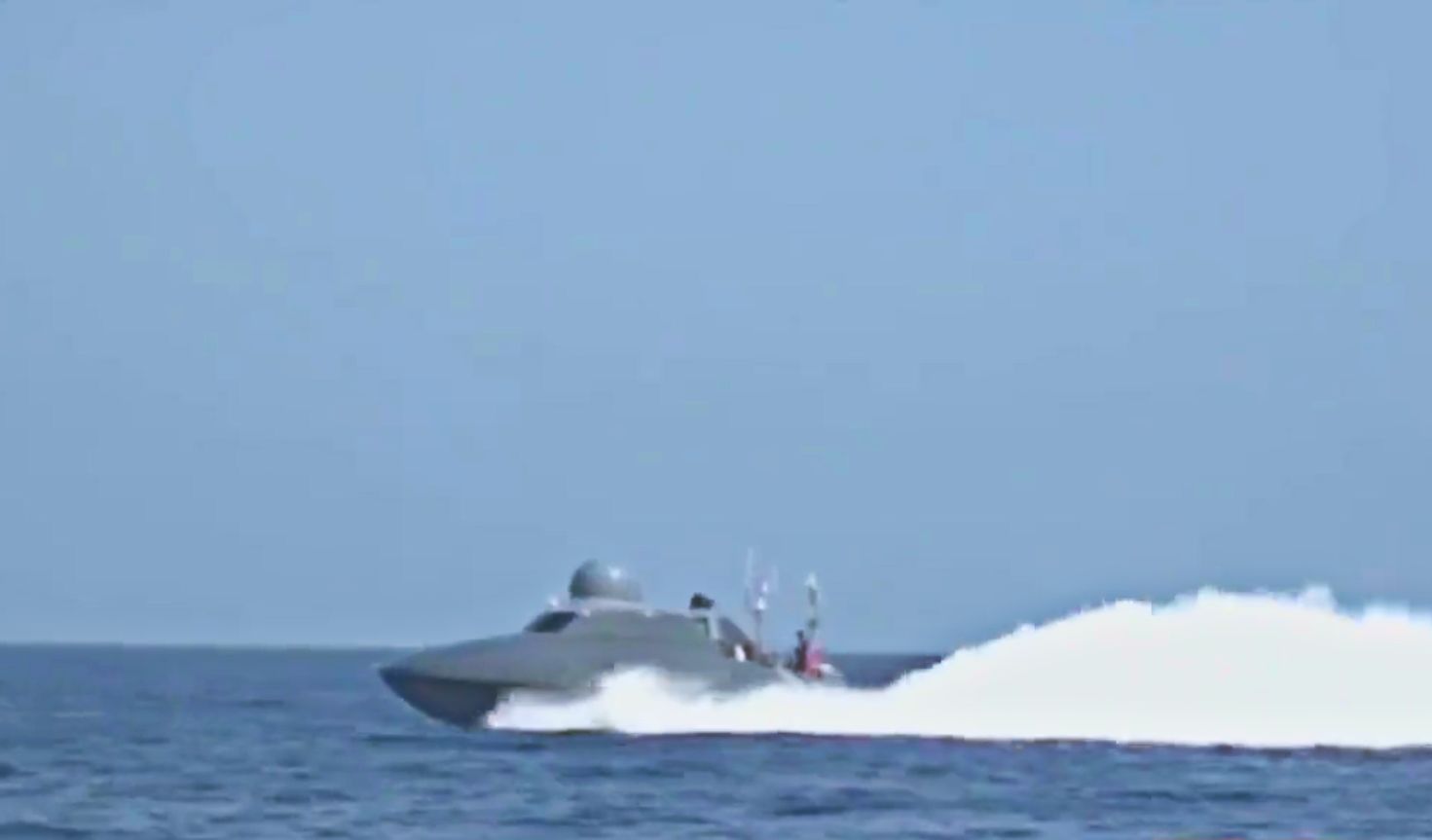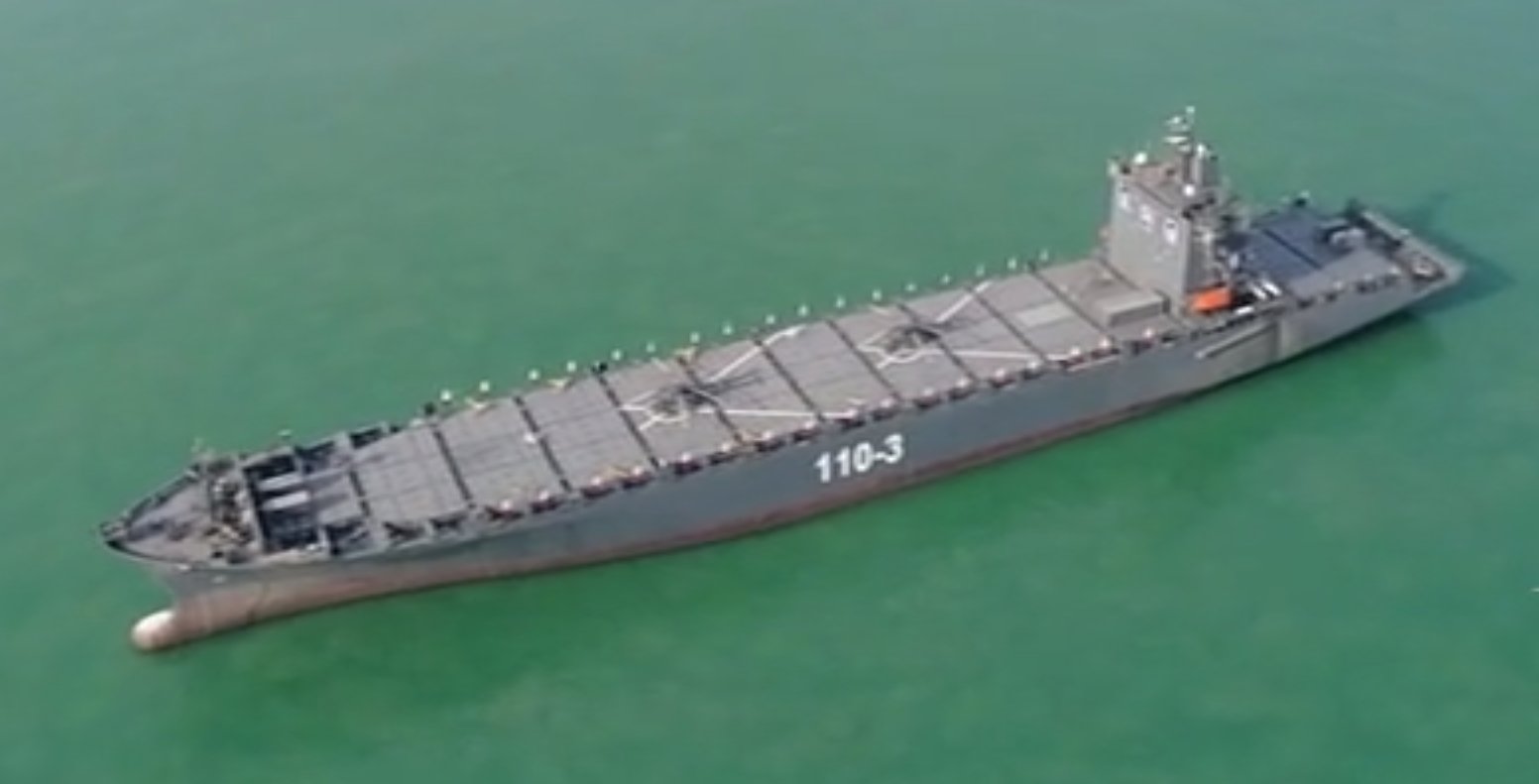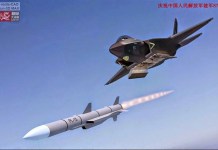Iran’s second navy, under the IRGC, has developed the world’s first very small air-defense boat amid rising concerns about Tehran’s burgeoning military power that is seen as a threat by countries in the Persian Gulf and Israel.
The development of a small defense boat is unique in its own right.
This is the first-of-its-kind vessel Iran has likely produced for domestic use by the Revolutionary Guard Corps Navy, according to a report by Naval Analyst and OSINT expert HI Sutton.
Subsequently, a video surfaced on social media in which a Nawab surface-to-air missile is released from the Vertical Launch System of the boat. According to military observers, this air defense boat was modified and converted from the British Bladerunner. This is due to the hull’s shape, which resembles the Bladerunner.
The vessel is reportedly named the ‘Zulfiqar-class,’ which is confusing as a host of other equipment in the Iranian military go by that name. Sutton believes that this small air defense boat has short-range surface-to-air missiles (likely the Nawab) as its primary armament.
Last year, the Islamic Revolution Guards Corps (IRGC) Navy received three indigenously-developed vessels equipped with sophisticated air defense systems.
At the time, Commander of the IRGC Navy, Rear Admiral Ali Reza Tangsir, claimed that the nation’s new speed boats use cutting-edge technology produced by domestic firms to dodge hostile radar.
BREAKING- IRAN reveals world’s first Air Defence Small Boat equipped with Nawab Short-range SAM System#IRAN #IRGC #missile #boat pic.twitter.com/eRfCrLfpsi
— EurAsian Times (@THEEURASIATIMES) March 10, 2023
Unlike other vessels equipped with cutting-edge missile defense systems to identify hostile targets, the Iranian Zulfiqar air-defense boat is more like “a sea-mobile air defense system like the Tor air defense system,” according to Sutton. Further, military observers have noted that the boat has a multi-functional AESA radar.
According to reports, the vertical launch system (VLS) is behind the cabin, and a sizable radome is over it. Whether this boat will be extensively used remains unknown because only one has reportedly been constructed.
In 2009 Iran got its hand on a British Bladerunner 51 fastboat
In 2023 Iran made a Bladerunner based fast-boat
➡️ The first air-defense fastboat in the worldApparently with 5 x 4 = 20 Navab short-range VLS SAM
Likely with the previously known X-band AESA multifunction radar pic.twitter.com/qz1G2dCeFK
— Patarames (@Pataramesh) March 9, 2023
Although some small boats usually carry MANPADS, this is the first small boat with a complete surface-to-air missile system.
It is pertinent to note that smaller boats are particularly susceptible to air assault. However, this is one of the many domestically-produced innovative military equipment that has drawn global attention.
This boat might be able to defend against short-range air attacks from a swarm of other vessels. This would become significant given that the global navies, including the United States, are also advancing work on unmanned surface vessels.
In September last year, the Iranian navy seized two US Navy Saildrone Explorer unmanned surface vessels (USVs) in the Red Sea. It released them later when the US dispatched two destroyers, the USS Nitze and USS Delbert D Black, and two helicopters to secure their release.
However, the incident gave the impression that the confrontation between the IRGC-N and rival navies could become more frequent with an enhanced Iranian naval presence in the region.
Against that backdrop, developing a sea-mobile air defense small boat could be an Iranian attempt at bolstering its defenses at sea.
This is even more significant since Tehran is reeling under international sanctions aimed at curtailing its military development and nuclear program. However, despite the international sanction regime getting tighter, the West Asian country has taken gigantic leaps in military development.

Iran’s Expanding Naval Fleet
Iranian reports state that the Islamic Revolutionary Guard Corps is strengthening its navy on a war footing. On the morning of March 9, pictures of newly outfitted speedboats and a new support ship were broadcast by Iranian media. Iran essentially has two navies: the state navy and the IRGC navy.
Iran’s Revolutionary Guard Corps navy announced it had added a new ocean-going warship and tens of missile-launching speed boats to its fleet. Iran International reported that the vessels were part of a significant upgrade, bolstering the country’s navy fleet.
The IRGC held an unveiling ceremony in the port city of Bandar Abbas. Among the new additions to the fleet are 99 Ashura and Tariq speed boats, modified from rocket launchers to missile launchers, and the Iranian-built Shahid Mahdavi destroyer, formerly a commercial ship.
The “Shahid Mahdavi ocean liner,” which would enable the IRGC to conduct long-distance missions, was claimed to be under construction in Iran last year, according to sources. Although it looks like an ocean liner, this vessel—which Iran International claims was once known as Sarvin—was initially a cargo ship and is now intended to serve as a floating base.

According to sources, the IRGC, which oversees its division of Iran’s navy, is receiving almost 100 new patrol boats and a sizable support ship in the shape of an “ocean liner” modified for naval purposes. Iran has recently attempted to strengthen its relatively weak naval force, even sending ships on lengthy expeditions to South America and Russia.
The reports about Iran’s new missile-capable and drone-launch-capable missile boats have been circulating since 2020 when Naval Post reported that Iran had received 112 missile-launching boats. The Ashura, Taregh, and Zulifqar classes are some of the few boat types that Iran built.
The IRGC-N Commander said at the ceremony that Iran is also rolling out the larger logistic vessel, perhaps one of at least two that will be built to carry helicopters and drones.
He gave some specifics on the Mahdavi, noting that it was 2,100 tons, 240 meters long, and 27 meters wide, with a radar array and surface-to-surface, surface-to-air missiles, highly advanced electronic warfare Khordad 3 integrated telecommunication [air-defense] systems and had the capability of carrying helicopters, UAVs and operational vessels.
The induction of these new vessels and the modifications carried out by Iran is expected to significantly bolster its capability at the seas, especially when faced with a more aggressive Israel and a more hostile neighborhood.
- Contact the author at sakshi.tiwari9555@gmail.com
- Follow EurAsian Times on Google News




